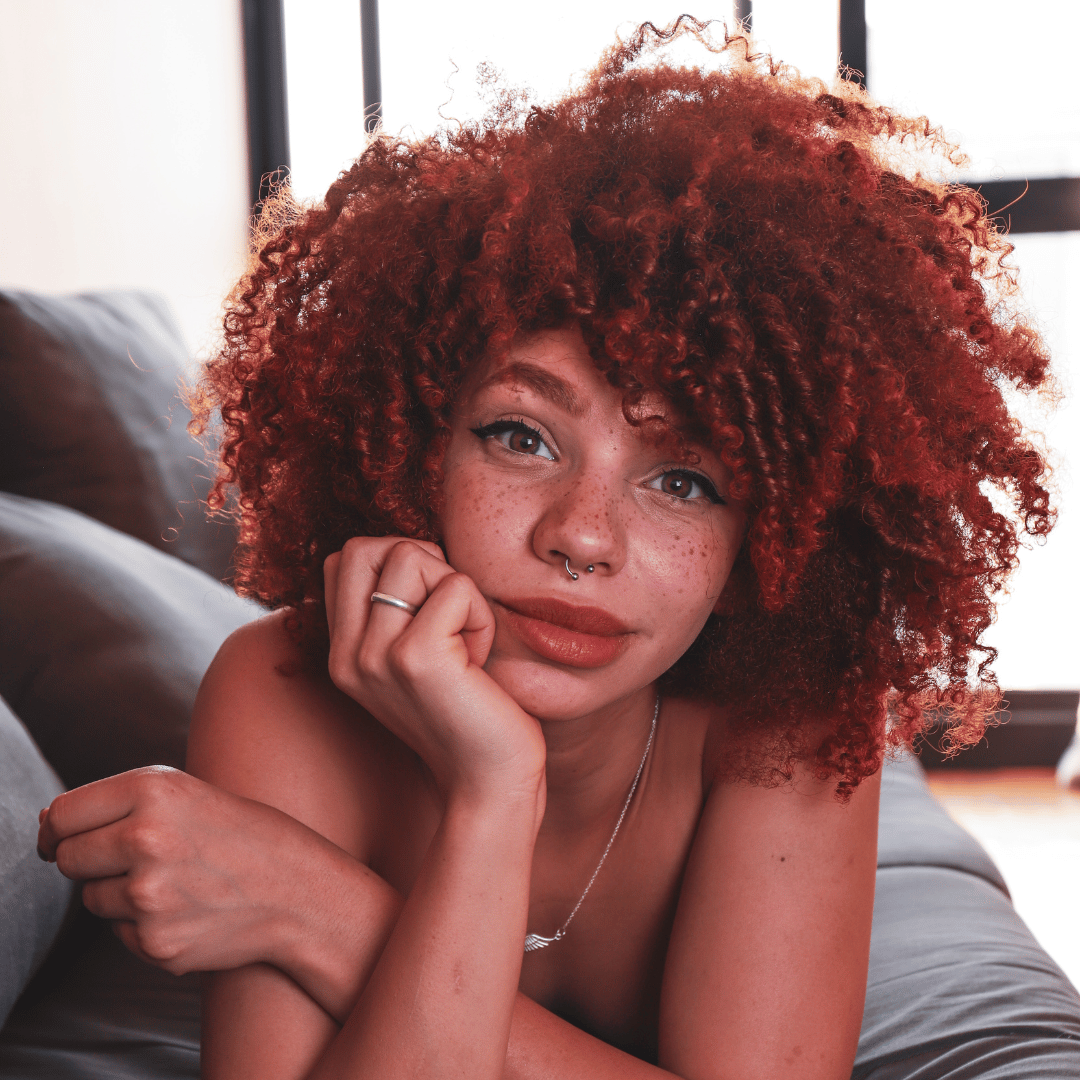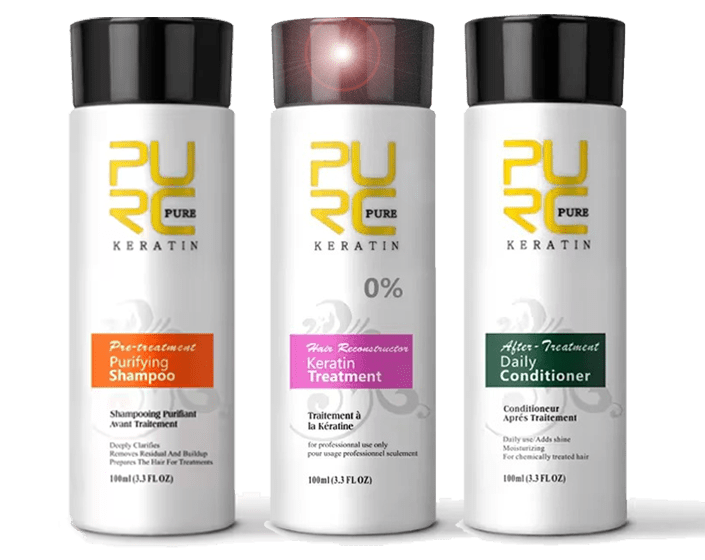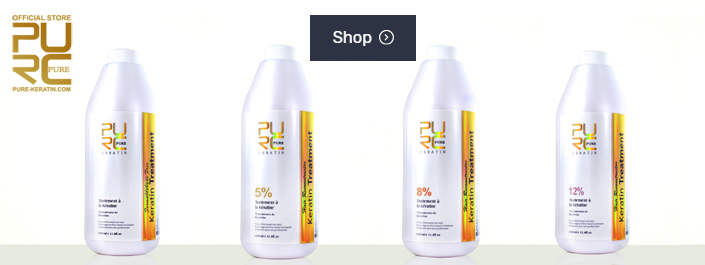DIFFERENCE BETWEEN CURLY AND COILY HAIR
PURE KERATIN on 22nd Feb 2023
Curly and coily hair are both hair types that have a natural texture that forms spirals or coils, but they have some key differences.
Curly hair is a hair type that has loose or tight curls that are well-defined and have a distinct S-shaped pattern. The curls can range from loose waves to tight ringlets, and the hair strands are usually fine to medium in thickness. Curly hair tends to be more prone to frizz and dryness due to its shape, which makes it harder for natural oils to travel down the hair shaft.
Coily hair, on the other hand, is a hair type that has a tighter curl pattern with more defined coils that resemble a zigzag shape. Coily hair strands are usually tightly coiled and can range from fine to coarse in texture. Coily hair is more prone to dryness, breakage, and shrinkage than curly hair, and it requires more moisture and careful handling to keep it healthy.
Overall, while both curly and coily hair have natural curl patterns, the difference lies in the tightness of the curls and the texture of the hair strands. Understanding these differences can help individuals choose the right hair care products and techniques to maintain healthy and beautiful hair.

KINKY COILY HAIR
Coily hair, also known as kinky hair, is a hair type that is characterized by tightly coiled or zigzag-shaped curls. It is the most delicate and fragile hair type, and it requires special care and attention to maintain its health and beauty. In this post, we will discuss everything you need to know about coily hair, from its characteristics to the best hair care practices for its maintenance.
Characteristics of Coily Hair
Coily hair is the most tightly coiled hair type and is often mistaken for being rough or coarse. It ranges from fine to coarse and has a diameter that is less than that of a sewing needle. It is also the most fragile hair type, and it is prone to breakage and damage if not properly cared for. Due to the tightness of the curls, coily hair often appears shorter than it actually is.
The texture of coily hair can vary from soft and fluffy to wiry and rough, depending on the individual. The curl pattern can range from a tight S-shaped coil to a zigzag pattern. Coily hair also has a tendency to shrink, which means that it appears shorter than it actually is.

WHAT PERCENTAGE OF THE WORLD HAS COILY HAIR?
It is difficult to give an exact percentage of the world's population that has coily hair, as hair type and texture can vary widely depending on factors such as ethnicity and geographic region. However, it is generally accepted that coily hair is most common among individuals of African descent, although it can also be found in people of other ethnicities.
According to a study published in the International Journal of Trichology, the prevalence of coily hair in the African population ranges from 51.6% to 98.8%, depending on the region. This suggests that coily hair is quite common among people of African descent. However, it is important to note that hair texture is not determined solely by ethnicity, as individual factors such as genetics, age, and health can also play a role.
Overall, while there is no precise percentage of the global population with coily hair, it is safe to say that coily hair is a common hair type among people of African descent and can also be found in individuals of other ethnicities.

CHALLENGES OF COILY HAIR
Coily hair is often challenging to manage and style, and it requires more maintenance than other hair types. The tight curls make it difficult for natural oils to reach the ends of the hair, resulting in dryness and breakage. Coily hair also has a tendency to tangle, which can lead to matting and knotting if not properly detangled.
Another challenge of coily hair is that it can be more susceptible to damage from heat styling, chemical treatments, and even certain hair care practices. Because of the delicate nature of coily hair, it's essential to take special care to protect and maintain its health.
hair, so it's best to avoid it whenever possible. If you do use
DOES COILY HAIR GROW SLOWER?
Coily hair does not necessarily grow slower than other hair types, but it may appear to grow slower due to its tendency to shrink as it grows. Shrinkage is the natural tendency of coily hair to appear shorter than it actually is, as the hair coils back on itself, making it difficult to see the true length. As a result, it can be more challenging to track the growth progress of coily hair.

Additionally, coily hair can be more prone to breakage due to its tightly coiled nature, which can make it more fragile. This can lead to the appearance of slower hair growth, as breakage can cause the hair to appear shorter than it actually is. Therefore, it is important to take extra care when handling and styling coily hair to prevent breakage.
It is also worth noting that the rate of hair growth can vary from person to person and can be affected by factors such as genetics, diet, and overall health. While coily hair may require more attention and care to maintain its health, it is not inherently slower-growing than other hair types.
HOW DO YOU SLEEP WITH COILY HAIR?
Sleeping with coily hair can be a challenge, as coily hair is more prone to dryness, breakage, and tangling. However, there are several ways to protect and maintain coily hair while sleeping:
- Use a satin or silk pillowcase: Cotton pillowcases can absorb moisture from the hair, leading to dryness and breakage. Using a satin or silk pillowcase can help to minimize friction and keep hair moisturized.
- Sleep with a satin or silk bonnet or scarf: If you prefer to wrap your hair while sleeping, using a satin or silk bonnet or scarf can provide extra protection against friction and tangling.
- Try a pineapple or high bun: To preserve your curls and minimize tangles, you can try the "pineapple" method by gathering your hair at the crown of your head and securing it with a satin scrunchie. Alternatively, you can put your hair in a high bun to keep it contained while you sleep.
- Moisturize your hair: Coily hair can be more prone to dryness, so it's important to keep it moisturized. Before going to bed, you can apply a leave-in conditioner, oil, or other moisturizing product to your hair to help keep it hydrated.
Overall, the key to sleeping with coily hair is to minimize friction and tangles while keeping hair moisturized. By using a satin or silk pillowcase, wrapping your hair in a bonnet or scarf, and moisturizing your hair before bed, you can help to protect your coily hair while you sleep.

5 BEST TIPS FOR COILY HAIR
When it comes to taking care of coily hair, there are several best practices to follow to maintain its health and beauty.
1) Moisturize Regularly
The most critical aspect of caring for coily hair is to keep it moisturized. Coily hair is naturally dry, and it requires regular moisturization to prevent breakage and damage. It's best to use products that are specifically formulated for coily hair, such as leave-in conditioners, moisturizing oils, and deep conditioning treatments. It's also essential to drink plenty of water to keep your hair and body hydrated.
2) Avoid Over-Washing
Coily hair is delicate and can be easily stripped of its natural oils. Over-washing can lead to dryness and breakage, so it's essential to limit the number of times you wash your hair. It's best to wash coily hair once a week or every two weeks, depending on your hair's needs. Use a gentle, sulfate-free shampoo and conditioner to avoid stripping your hair of its natural oils.
3) Detangle Carefully
Coily hair has a tendency to tangle, so it's important to detangle it regularly. Use a wide-tooth comb or detangling brush to gently remove knots and tangles, starting from the ends of your hair and working your way up. It's best to detangle your hair when it's damp, using a leave-in conditioner or detangling spray to make the process easier.
4) Protect Your Hair at Night
Sleeping with your hair uncovered can lead to tangling and breakage. To protect your coily hair at night, use a silk or satin pillowcase or wear a satin bonnet or scarf. This will prevent your hair from rubbing against harsh fabrics and help preserve your hairstyle.
5) Minimize Heat Styling
Heat styling can cause significant damage to coily



















